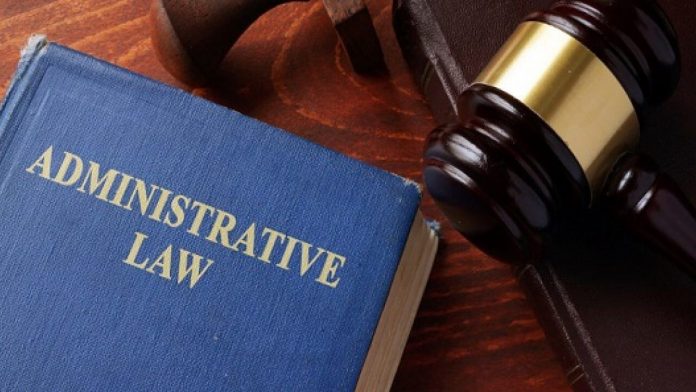This article is written by Anjana Dhital.
Table of Contents
Introduction
When determining the role of judicial control over public administration with an intent to prevent power abuse and limit administrative discretion, there are various schools of thoughts which question as to whether the executive actions should be brought under strict judicial control or executive actions should be independent of judicial control or a mid-way should be adopted between the two. Therefore, this article aims to explore the three theories of administrative law which help in understanding all these discourses i.e. the red, green and amber light theories.
Conceptual development
The notion of traffic light theories i.e. red and green light theories in administrative law was first used by Harlow and Rawlings in 1948 A.D. in assessing the objectives of administrative law.[1] These theories emerged as a result of extensive intellectual debates on the relevance of judicial control over executive actions.
The landmark case of Marbury v. Madison (see here) decided by the American Supreme Court in 1803 A.D. was the first case to have recognized judicial supremacy[2] and its exercise through judicial review. This was later acknowledged by countries under Common legal system such as Canada, Australia, New Zealand, India and Nepal wherein courts started applying the principles of administrative law to evaluate the plans, policies and actions of the government.[3] This raised multiple crucial questions[4] throughout the globe such as:
- What is the role of the law? What is the function of the judiciary?
- Should courts be primarily responsible for administration?
- Who is to be entrusted with the ultimate power – government or the judiciary?
- Would it be appropriate to borrow the model of private legal adjudication in settling administrative (public) disputes?
- Should individual rights gain primacy over public interests?
In the early 1990s, there arose a huge debate worldwide over the concepts of “New Public Management” in England and “Reinventing Government” in America for governance reform. The conventional school of public administration favored rule of law and significance of legal rules and directives for the operation of administration whereas the new school supported the idea of governance reform which aimed to make administration more result-oriented through deviation from rigid legal rules and directives.[5]
In this way, these political debates contributed to the development of various new thoughts and ideologies within the ambit of administrative law. One of such thoughts raised a prominent question as to whether the executive actions should be brought under strict judicial control or executive actions should be independent of judicial control or a mid-way should be adopted between the two. This question was then addressed through the foundation of traffic light theories. Initially, only the conception of red and green light theories existed. But, in 2004, two scholars namely Wade and Forsyth shed light upon the amber element between the two theories.[6] As a result, these theories came into being.
Conceptual understanding
-
Red light theory
The red light theory is believed to have originated from the laissez-faire political tradition of the 19th century. This tradition held deep-rooted suspicion towards executive power and sought to minimize the encroachment of the state on the rights (especially property rights) of individuals.[7] The concept of “legal sovereignty” explained by Dicey well portrays the idea of red light theory as he maintains that the government must function in accordance with the legal rules laid down by the Parliament. Thus, under circumstances wherein the government does not act according to these determined rules, the courts have a power to control it and ensure that it acts lawfully. The red light theory is closely associated with the principle of ‘self-correcting democracy’ in which the rule of law remains a prime concept. The law is regarded as an autonomous and coherent discipline which performs an important control function (‘checks and balances’).[8]
A major assumption of this theory is that when public bodies or executive authorities exceed their powers, judicial intervention works as a sanction. This is because bureaucratic and executive power of the state and its institutions, if unchecked, will threaten the liberty of all individuals. Thus, judicial control is required in the political framework of a state.[9] The red light theorists also believe that the judiciary possesses its own standards of independence and fairness and can be relied upon, in examining the legality of executive action. Hence, it can be used as an effective mechanism for check and balance in a state system.
These are the various tenets of this theory:
- Courts are the primary weapon for protection of the citizen and control of the executive.[10]
- The supremacy of law must prevail over politics.
- The administrative authorities must be kept under judicial control.
- For judicial control, the general system of adjudication is appropriate.
- Public law must be oriented towards strengthening individual liberties.
- The world of law is apolitical, neutral and independent of the world of government, politics and administration.[11]
- Administrative law should aim to curb or control the state.[12]
Therefore, the red light theory emphasizes on law as an instrument for the control of power and protection of individual liberty.[13] It advocates for an interventionist standpoint by the courts to the review of administrative decisions. As expounded by Dicey, this theory looks to the model of the ‘balanced constitution’ accommodating the judicial control of executive power[14] as subject to political control by the Parliament through legislation of strict rules and to legal control through judicial monitoring by the courts.
-
Green light theory
As there spread multiple critiques and challenges to the red light theory, an alternative tradition emanated between the two world wars.[15] This tradition constituted a counter theory to the red light theory termed as the “green light theory.” This theory maintains that the use of executive power to provide services for the benefit of the community is entirely legitimate. Thus, the function of the courts in checking executive action is a questionable activity.[16] However, it does not favor unrestricted or arbitrary action of the state.[17]
The Green light theory, also perceived as functionalist theory, holds a positive outlook towards the state. It believes that the government is congenial[18] and it cannot be suspected of committing unlawful actions. The green light theory thus emphasizes on how it is important for the administrative law to facilitate government action rather than intervening in it through judicial or political control. It suggests how law can be used as an enabling mechanism so that it acts as a weapon to the administrative bodies.
Being driven by the utilitarian theory[19] associated with Jeremy Bentham and John Stuart Mill, this theory asserts that the greatest good for the greatest number in a state can be attained by encouraging state contribution with lesser control or intervention. It holds that collective goals of the society can be achieved through the democratic framework.[20] Hence, this theory does not aim to derogate individual rights or refute the core values and norms of a democratic society. This alludes towards a proposition that the collective (public) goals can be met by granting wide powers to the Executive and making it independent of judicial restrictions.
These are the various tenets[21] of this theory:
- Law is merely a matter of political discussion. Thus, law is not superior to administration or cannot prevail over administration.
- Public administration is not a necessary evil but a good element of the state.
- Administrative law should not only focus towards prohibiting negative practices of the government. It should also work on facilitating the administration and sound administrative practices.
- For encouraging the administration, adjudication based on legal rules is not the sole appropriate idea.
- There can be other alternatives to courts.[22]
Therefore, the main concern of green light theory is to reduce the influence of courts over administration because the courts with their legal values are considered as a hurdle to administrative progress. The green light prefers democratic form of accountability.[23] Based on these assumptions, green light theorists assent in facilitating the administration through prevention of any judicial or legal control over executive actions.
-
Amber light theory
While the red and green light theories hold two different standpoints in administrative law, the amber light theory tends to bring a point of consensus between the two. The amber light theory maintains that administrative law should apply the positive elements of both the theories. This theory identifies the essence of both “fire-watching” as well as “fire-fighting.” The administrative law can perform “fire-watching” by setting good standards of administrative conduct and “fire-fighting” by nullifying erroneous administrative actions through court pronouncements.[24] The amber light theorists believe that there must be a balance between both external as well as internal controlling mechanisms for effective public administration.[25] The amber element between the two theories has somewhere been realized by green light theorists too. As recognized by Harlow and Rawlings, green light theory does not wish to suggest that it favors unrestricted or arbitrary action by the state. In fact, it doesn’t rebut the rigidity of red light theory to some extent.[26]
These are the various tenets[27] of this theory:
- Law is both discrete from and superior to politics.
- The state can successfully be limited by law although that law should properly allow for the administration to enjoy a degree albeit controlled degree of discretionary authority.
- The best way of controlling the state is through the judicial articulation and enforcement of broad principles of legality.
- The goal of this theory is to safeguard a particular vision of human rights.
In this way, the amber light theory is a synthesis which combines the necessity for some control over administrative decisions with concern for setting good standards of administrative conduct, effective decision-taking, accountability, and human rights.[28] It has a close association with both theories however it does not support the existence of any one theory in isolation. It acknowledges the tenets of both the theories and tries to reconcile between the two.
Differences between the red and green light theories
Although the two theories cannot exist in isolation and complement each other in many ways, there are various underlying differences between the two. These differences have been listed below:
- The red light theorists advocate for an interventionist approach by the court in relation to the review of administrative decisions while the green light theorists question the function of courts in checking executive actions.
- The red light theory is suspicious about governmental actions while green light theory identifies the government as congenial.
- The red light theory relies on the courts primarily for administrative control whereas green light theory is inclined towards other possible alternatives to courts.
- The red light theory sees judicial control over administration as a weapon of sound administration while the green light theory perceives such control as an intervention or obstacle to the administrative process.
- The red light theory considers judicial review as a mechanism of controlling the administrative actions whereas the green light theory acknowledges the necessity of judicial review, at times, only to facilitate the administrative actions.
- The red light theory considers law as superior to politics while the green light theory holds that law is not superior to politics or administration.
- The red light theory appears politically conservative whereas the green light theory reflects a politically progressive view.[29]
- For red light theorists, answers to everything lay in courts and the rule of law while for green light theory, legal profession or law is too old fashioned.[30]
Analysis
All these theories had been propounded at various points of time in order to determine the objectives of administrative law and the extent to which public administration can use discretion in exercising its powers and functions. The red light theory asserts that the administration must not be given uncontrolled discretion. If it is allowed to exercise unlimited discretion, there are high probabilities for it to misuse its powers. Thus, the aim of administrative law must be to keep the government under strict control so that the liberties of all citizens are protected.
Contrarily, the green light theory maintains that public administration cannot function efficiently when kept under strict judicial control. It does not deny the role of law entirely however proposes that even if the mechanism of law is applied to public administration, it should be facilitative rather than restrictive or controlling.
Finally, the amber light theory seeks a point of consensus or reconciliation between the two theories and holds that no one theory prevails over the other. In fact, both the theories have positive elements in their tenets. And, the aim of administrative law should be to extract positive elements from both theories and apply those in the state framework. If we are to assess the significance of each of this theory, it is the amber light theory that should gain primacy because it tries to connect both the red and green light theories without alleviating their individual essence.
Conclusion
Therefore, having read all these theories, it may be inferred that public administration must be permitted to exercise a certain level of discretion in the exercise of their functions. However, the administration should not be left uncontrolled. There must be some limitations to their powers in order to prevent any potential misuse or abuse of those powers. Most importantly, the supremacy of law should prevail in order to protect individual liberties.
References
- Adam Tomkins, ‘In Defence of the Political Constitution’, Oxford Journal of Legal Studies, 2002.
- Carol Harlow & Richard Rawlings, Law and Administration, Cambridge University Press, New York, USA, 2009.
- David Stott & Alexandra Felix, Principles of administrative law, Cavendish Publishing Limited, London, United Kingdom, 1997.
- Ian Ellis Jones, Essential Administrative Law, Cavendish Publishing Limited, London, United Kingdom, 2001.
- Keshav Raj Pandey, Administrative Law, Ramesh Silwal, Chitwan, Nepal, 2017.
- Peter Leyland & Gordon Anthony, Textbook on Administrative Law, Oxford University Press, United Kingdom, 2013.
- Stephen P. Osborne, The New Public Governance?, Routledge, London, United Kingdom, 2009.
- William Wade & Christopher Forsyth, Administrative Law, Oxford University Press, United Kingdom, 2014.
[1] David Stott & Alexandra Felix, Principles of administrative law, Cavendish Publishing Limited, London, United Kingdom, 1997, p.29.
[2] Keshav Raj Pandey, Administrative Law, Ramesh Silwal, Chitwan, Nepal, 2017, p. 50.
[3] Ibid.
[4] Ibid; Stott & Felix (n1) p.29.
[5] Stephen P. Osborne, The New Public Governance?, Routledge, London, United Kingdom, 2009, pp. 2-3.
[6] William Wade & Christopher Forsyth, Administrative Law, Oxford University Press, United Kingdom, 2014, pp. 5-6.
[7] Peter Leyland & Gordon Anthony, Textbook on Administrative Law, Oxford University Press, United Kingdom, 2013, p.5.
[8] Ibid.
[9] Leyland & Anthony (n7) p.6.
[10] Carol Harlow & Richard Rawlings, Law and Administration, Cambridge University Press, New York, USA, 2009, p.25.
[11] Stott & Felix (n1) p.29.
[12] Ibid.
[13] Ian Ellis-Jones, Essential Administrative Law, Cavendish Publishing Limited, London, United Kingdom, 2001, p.9.
[14] Harlow & Rawlings (n10) pp.22-23.
[15] Ibid., p.31.
[16] Stott & Felix (n1) p.30.
[17] Ibid.
[18] Ibid.
[19] Leyland & Anthony (n7) p.7.
[20] Ibid.
[21] Pandey (n2) p.60.
[22] Harlow & Rawlings (n10) p.36.
[23] Ibid., p.38.
[24] Pandey (n2) p.62.
[25] Ibid., p.63.
[26] Harlow & Rawlings (n10) p.31.
[27] Adam Tomkins, ‘In Defence of the Political Constitution’, Oxford Journal of Legal Studies, 2002, available at https://s3.amazonaws.com/oxbridgenotes/samples/15602/original/Theory_sample.pdf, accessed on 25 March 2019.
[28] Leyland & Anthony (n7) p.10.
[29] Tomkins (n27).
[30] Harlow & Rawlings (n10) p.36.
LawSikho has created a telegram group for exchanging legal knowledge, referrals and various opportunities. You can click on this link and join:
 Serato DJ Crack 2025Serato DJ PRO Crack
Serato DJ Crack 2025Serato DJ PRO Crack











 Allow notifications
Allow notifications



